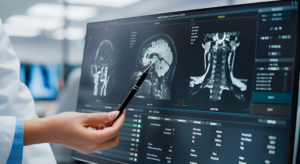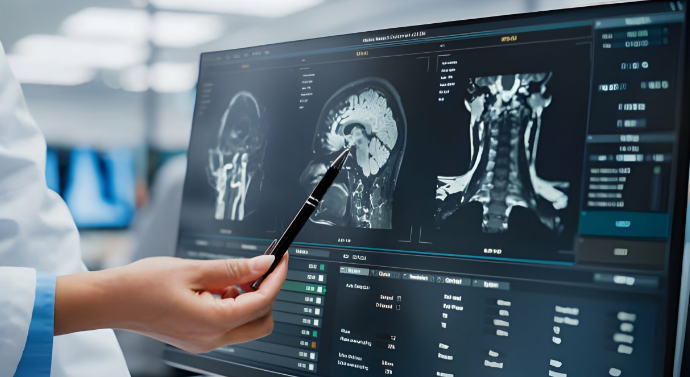How MRI Technology is Revolutionizing Medical Diagnostics: Advances and Applications
MRI is causing a sea change in medical diagnosis and the treatment of diseases. It is an advanced imaging technique that provides highly detailed pictures of the body’s organs and tissues. By providing clearer images compared to the general method, MRI helps medical professionals identify problems much more clearly and earlier.
Patients benefit from MRI not only because it provides more accurate diagnoses, but also because the procedure itself is non-invasive. Unlike X-rays or computed tomography scans, MRIs do not rely on the use of radiation and are hence safe to be conducted as frequently as desired. This aspect encourages more complete follow-up of patients over a period of time.
With the advancement in MRI technology, the scope of its application increases within the various medical fields. The consequence to health is immense; it extends the capability regarding the location and detection of tumors, injuries, and disorders of the brain a lot earlier and more vividly.
Key Takeaways
- MRI provides clearer images for better diagnosis.
- The procedure is safe and non-invasive.
- Advances in MRI create more applications within the various medical fields.
Basics of MRI Technology
MRI relies on the use of magnetic fields and radio waves to produce even minute details of the organs and tissues in the body. This section discusses basic principles of MRI, its major equipment, and evolution of this modality over time.
Physics Behind Magnetic Resonance Imaging
MRI works on the principles of nuclear magnetic resonance. This is a technique whereby when a person goes inside the tunnel of the MRI machine, it generates strong magnets that create a magnetic field, which aligns hydrogen atoms in the body. This is followed by the sending of radiofrequency pulses through the body.
This energy interferes with the arrangement of hydrogen atoms. Once the pulses are off, the atoms revert to their previous states, thereby releasing energy at the same time. Detectors receive this energy that was released and create images from it. The images produced depict a difference between types of tissues, thus making it possible for doctors to view various medical conditions clearly .
MRI Equipment and Components
A basic MRI consists of several key components that are helpful in the working of the machine. The major part is the MRI scanner housing very strong magnets. It is these magnets which produce the magnetic field so essential in MRI imaging.
Other important components include:
- Gradient coils: They vary the magnetic field, allowing for the spatial localization of signals.
- Radiofrequency coils: They broadcast and receive radio waves.
- Computer systems: They process the signals and generate images.
Each element in the machine plays a critical role in the generation of quality images and the making of accurate diagnoses.
Evolution of MRI Technology
MRI technology has undergone major evolution since its invention in the 1970s. The first machines were huge and slow, generating images that were rather blurred. With advances in technology, the size of the machines reduced while the speed increased.
Modern MRI machines produce sharper images, taking less time to scan. Functional MRI, for example, can visualize activity of the brain. Newer technologies, like contrast-enhanced MRI, continue to make the identification of tumors and other abnormalities even clearer.
Advances like these have made MRI a very valuable diagnostic modality in medicine. As research in the field continues, the technology supporting MRI also changes and develops, producing types of imaging that are even more detailed.
Impact on Medical Diagnostics
MRI has brought many changes in the way physicians diagnose and treat conditions of the human body. Advanced imaging capability of the technology provides highly detailed views of structures inside the body hence improving accuracy in medical diagnosis of conditions. This section considers development in MRI and their impact on major areas of diagnosis in medicine.
Improvement on Image Clarity and Details
In recent times, there has been a great development in the ability of MRIs to produce clearer and more detailed pictures. High-resolution images enable one to see tissues and organs more clearly. As doctors obtain clear images, it can easily notice abnormalities, which are very important for diagnosis.
Some newer techniques include:
3D: The imaging can provide a full view of the internal structure.
Functional MRI: This can measure activities of the brain by detecting changes associated with blood flow.
These enhancements help in more specific treatments according to the needs of the individuals concerned.
Better Diagnosis of Neurological Conditions
MRI is quite crucial in the diagnosis of neurological disorders. Neurological disorders such as multiple sclerosis, Alzheimer’s disease, and strokes are well-determined by means of enhanced MRI techniques.
For instance, fMRI offers insight into brain function and the regions which neurological diseases may have affected. This serves to assist in the choice of appropriate treatments.
Early diagnosis in cases like brain tumors adds a lot to better outcomes in patients. This leads to the management of these complicated disorders based on educated decisions enabled by the detailed imaging facilitated through MRI.
Role of MRI in Cancer Detection and Management
MRI plays an important role in the detection and management of different cancers. Detailed images produced through it enable one to identify tumors that could otherwise be ignored with other forms of imaging.
MRI thus finds its place in association with mammography among high-risk patients for the diagnosis of the ailment. Due to its precision, it can also monitor responses from the tumor to various types of treatment.
Besides this, MRI helps surgeons by indicating the exact tumor position and its surrounding structures. It provides the necessary information needed for the removal of the tumor and, at the same time, minimizes loss of healthy tissue.
Newer Imaging Modalities of the Heart
It helps in the diagnosis of cardiovascular diseases. Without using radiation, one can get clear detailed pictures of the heart and vessels.
Techniques like cardiac MRI, especially, allow one to have a great insight into the structure, function, and even the blood flow of the heart. This, in return, leads to a well-diagnosed condition of Cardiomyopathy, coronary artery disease, disorders of the heart valve.
Moreover, MRI is able to quantify the residual viability of the heart following an infarction. Information from the various scans is integrated to enable physicians to establish proper treatment plans and enhance patient care.
Future of MRI Technology
The future is very bright for MRI technology. Researchers continue to improve the speed, resolution, and comfort of the machine for the patient.
Artificial intelligence is a new innovation being incorporated into MRI to analyze images faster and more accurately. This could mean quicker diagnosis and treatment.
Additionally, with the development of portable MRI machines, imaging services might also increase in the countryside. As technology continues to evolve, MRI will keep improving diagnostic capabilities in medicine and, as a result, continue to support superior patient outcomes.

Also Read :
- MRI-Guided Neurosurgical Interventions in Brainstem Lesions
- Using MRI to Assess Neurosurgical Interventions for Chronic Pain
- MRI-Guided Craniotomies: Precision Neurosurgery
- MRI Innovations in Neurosurgical Robotics and Navigation Systems
- MRI Innovations in Neurosurgical Robotics and Navigation Systems
